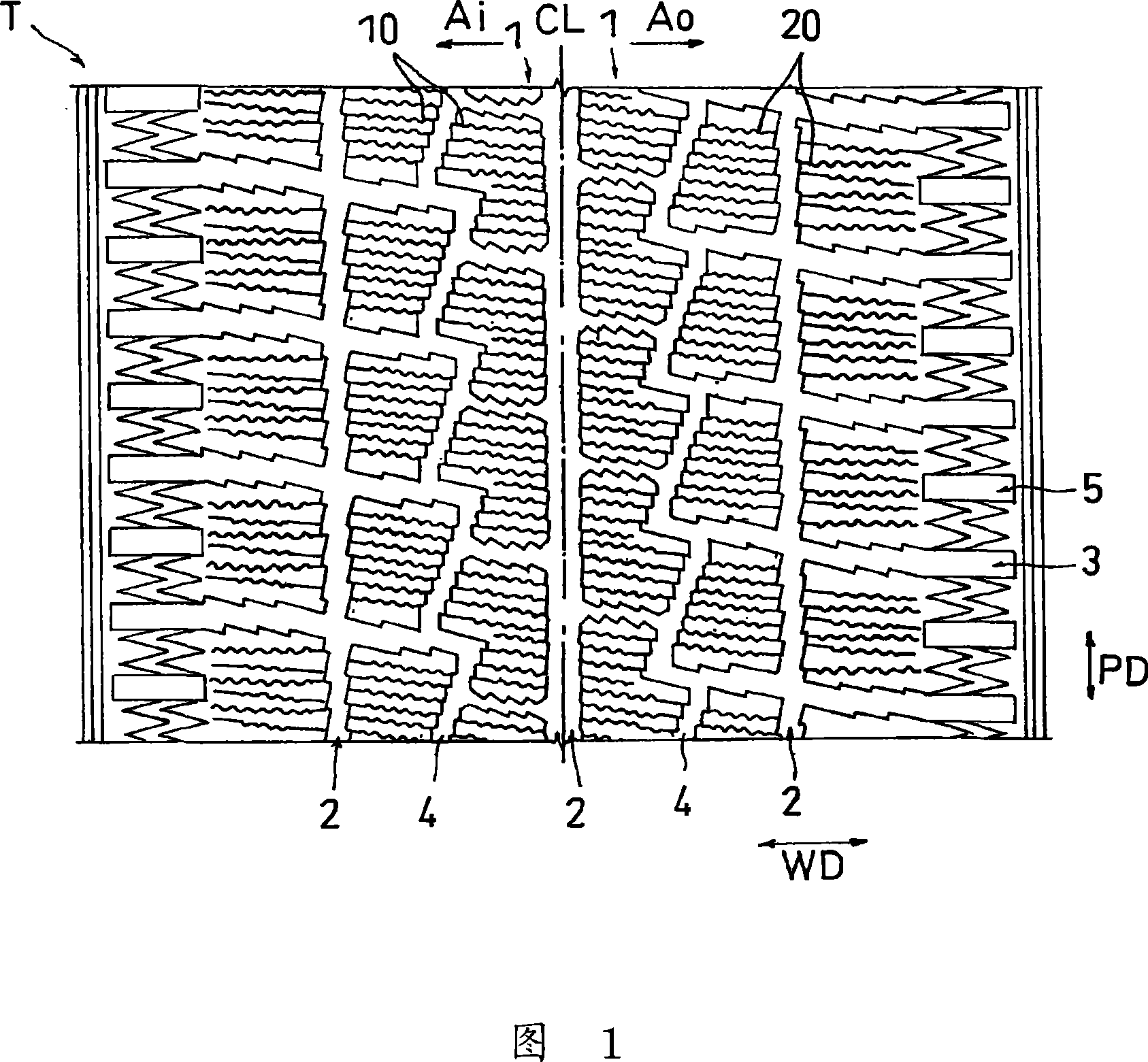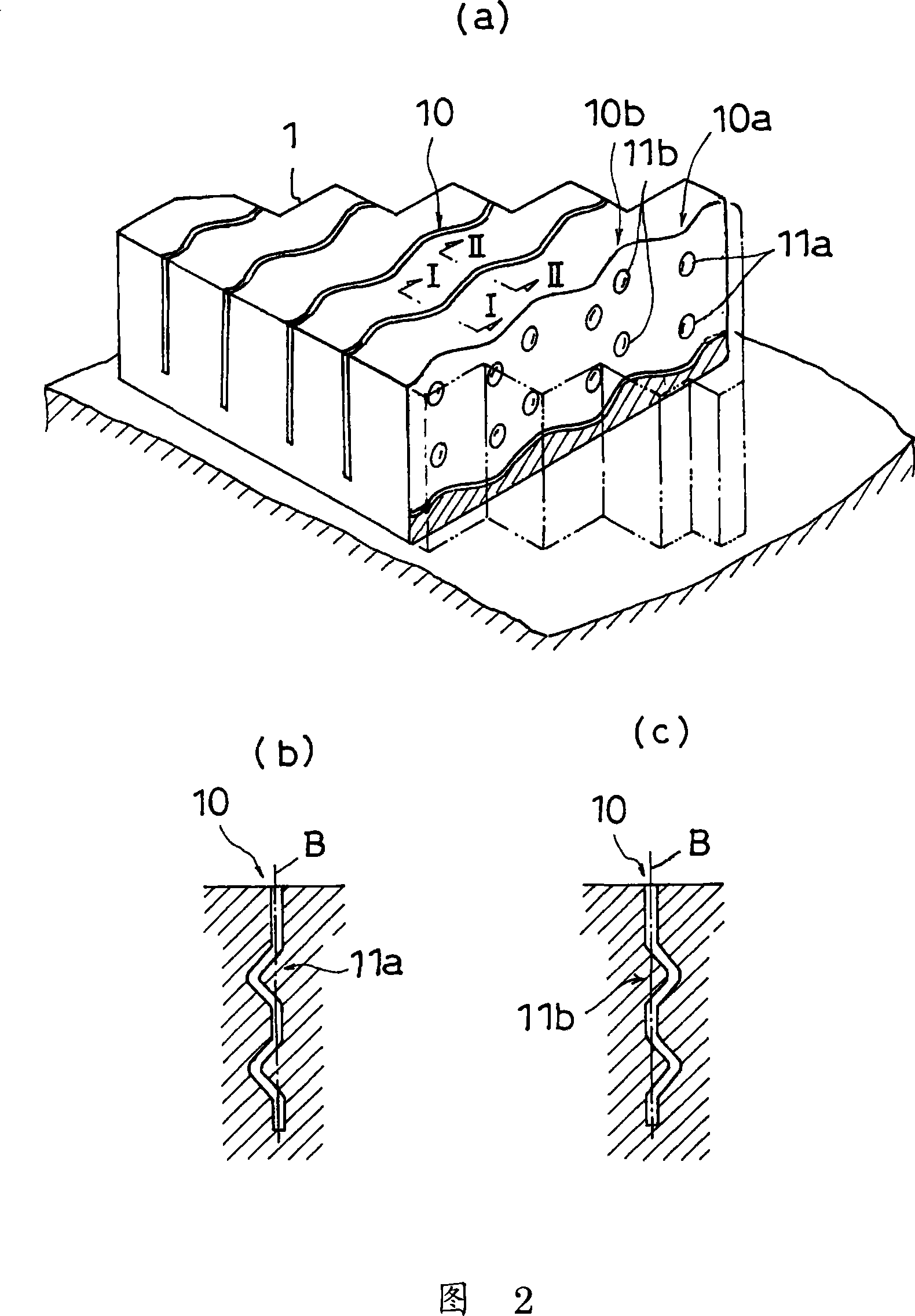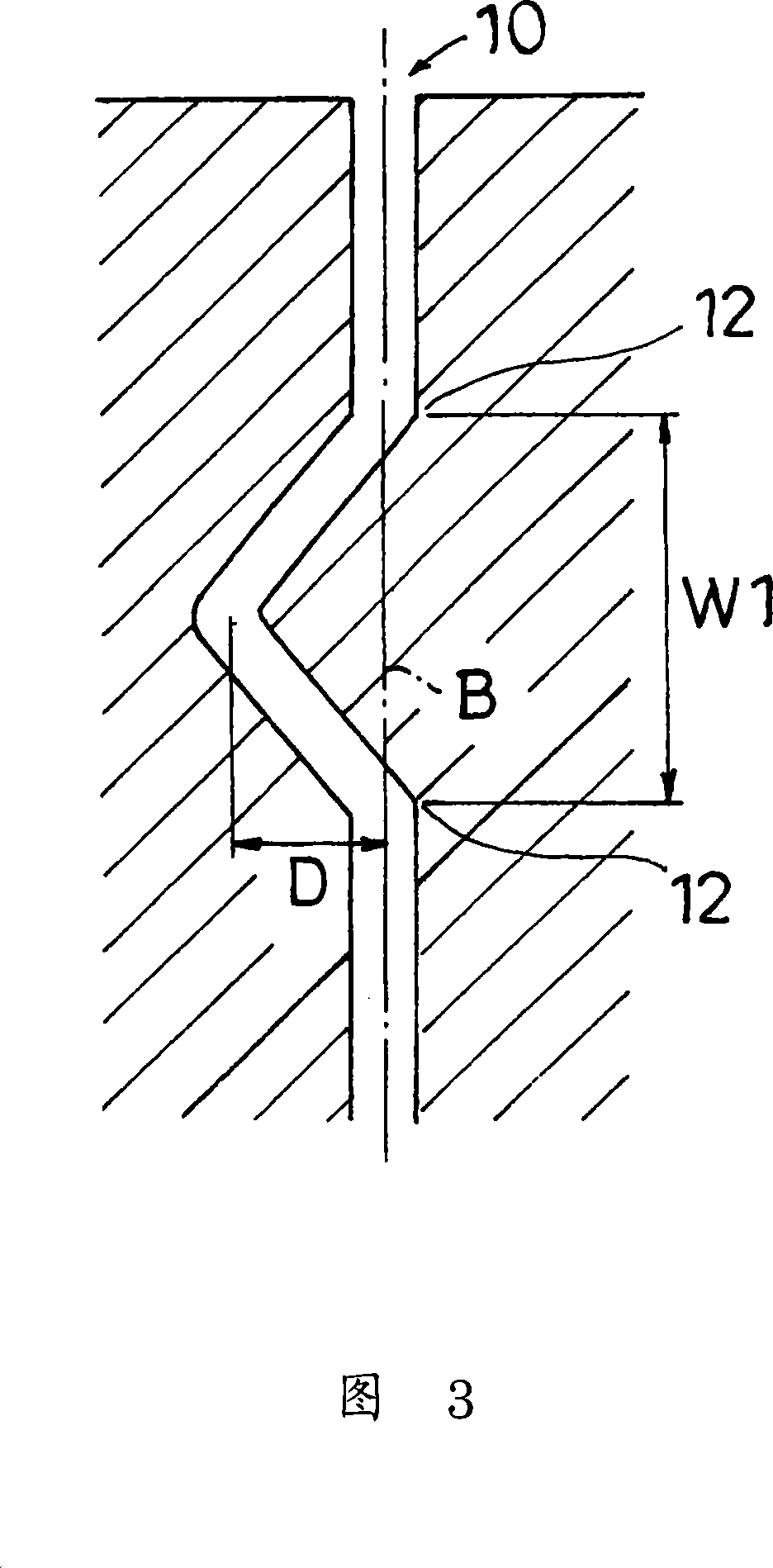Pneumatic tire
A technology of pneumatic tires and tires, applied in tire parts, tire treads/tread patterns, transportation and packaging, etc. The effect of enhancing the combined effect, improving the braking performance, and suppressing the movement in the lateral direction
- Summary
- Abstract
- Description
- Claims
- Application Information
AI Technical Summary
Problems solved by technology
Method used
Image
Examples
Embodiment approach
[0057] Next, other embodiments of the present invention will be described.
[0058] (1) Although the above-mentioned embodiment has shown an example in which the blocks are formed in the shape shown in FIG. Pattern blocks in a curved tone. In addition, instead of the blocks, ribs extending linearly in the tire circumferential direction, ribs extending zigzag in the tire circumferential direction, lugs, or the like may be formed.
[0059] (2) Although the above embodiment shows an example in which multiple rows of sipe are formed toward the tire width direction, the formation direction of the sipe (central line direction) may be a direction inclined with respect to the tire width direction. However, from the viewpoint of both the turning performance and the braking performance of the tire, the angle between the sipe forming direction and the tire width direction is preferably 0±45°, more preferably 0±20°, even more preferably 0±10° .
[0060] (3) Although the above embodimen...
Embodiment
[0067]Next, examples and the like which specifically show the configuration and effects of the present invention will be described. In addition, each performance evaluation of the tire was performed as follows.
[0068] (1) Braking performance on icy and snowy roads
[0069] Install the tires on a real vehicle (3000cc class FR sedan produced in Japan), drive it on a frozen road with a load of 1 person, and apply braking force at a speed of 40km / h to activate the ABS. The index evaluation is based on the braking distance at this time. In addition, the evaluation is indicated by an index display when the conventional product (comparative example 1) is 100, and the larger the numerical value, the better the result.
[0070] (2) Turning performance on icy and snowy roads
[0071] The tire is mounted on the same actual vehicle as in (1) above, and it is driven on the same road surface with a double-button curve (8-shaped curve: a circle of R = 25m) under the load condition of on...
Embodiment 1
[0083] For the tread pattern shown in Fig. 1, the first sipe shown in Fig. 2 (same size as in Comparative Example 2) is formed in the mounting inner region, and the second siping shown in Fig. 5 is formed in the mounting outer region Pattern (the size is identical with comparative example 3), makes the radial tire that specification is 205 / 65R15. Table 1 shows the results of the performance evaluations described above using this tire.
PUM
 Login to View More
Login to View More Abstract
Description
Claims
Application Information
 Login to View More
Login to View More - R&D
- Intellectual Property
- Life Sciences
- Materials
- Tech Scout
- Unparalleled Data Quality
- Higher Quality Content
- 60% Fewer Hallucinations
Browse by: Latest US Patents, China's latest patents, Technical Efficacy Thesaurus, Application Domain, Technology Topic, Popular Technical Reports.
© 2025 PatSnap. All rights reserved.Legal|Privacy policy|Modern Slavery Act Transparency Statement|Sitemap|About US| Contact US: help@patsnap.com



